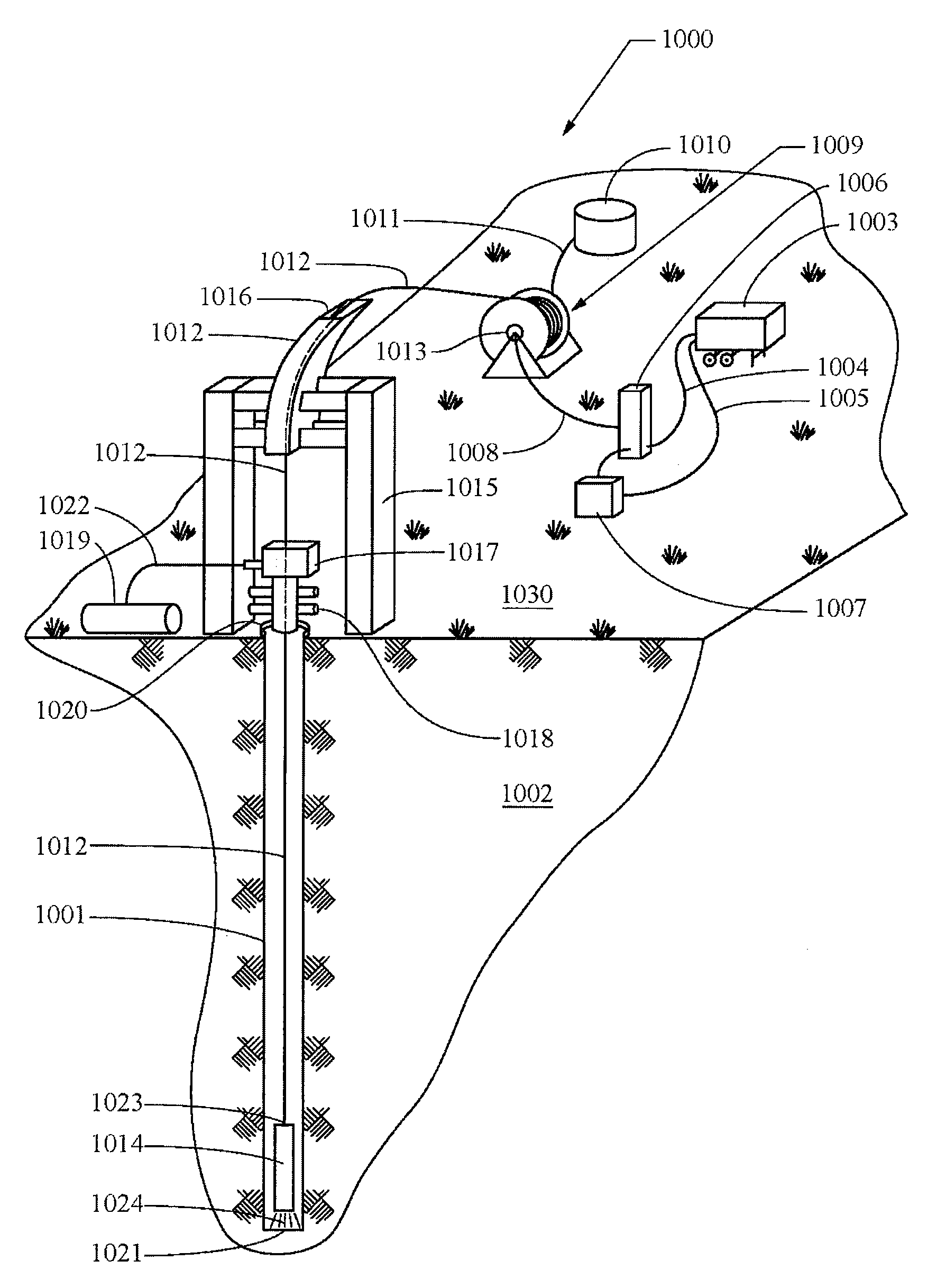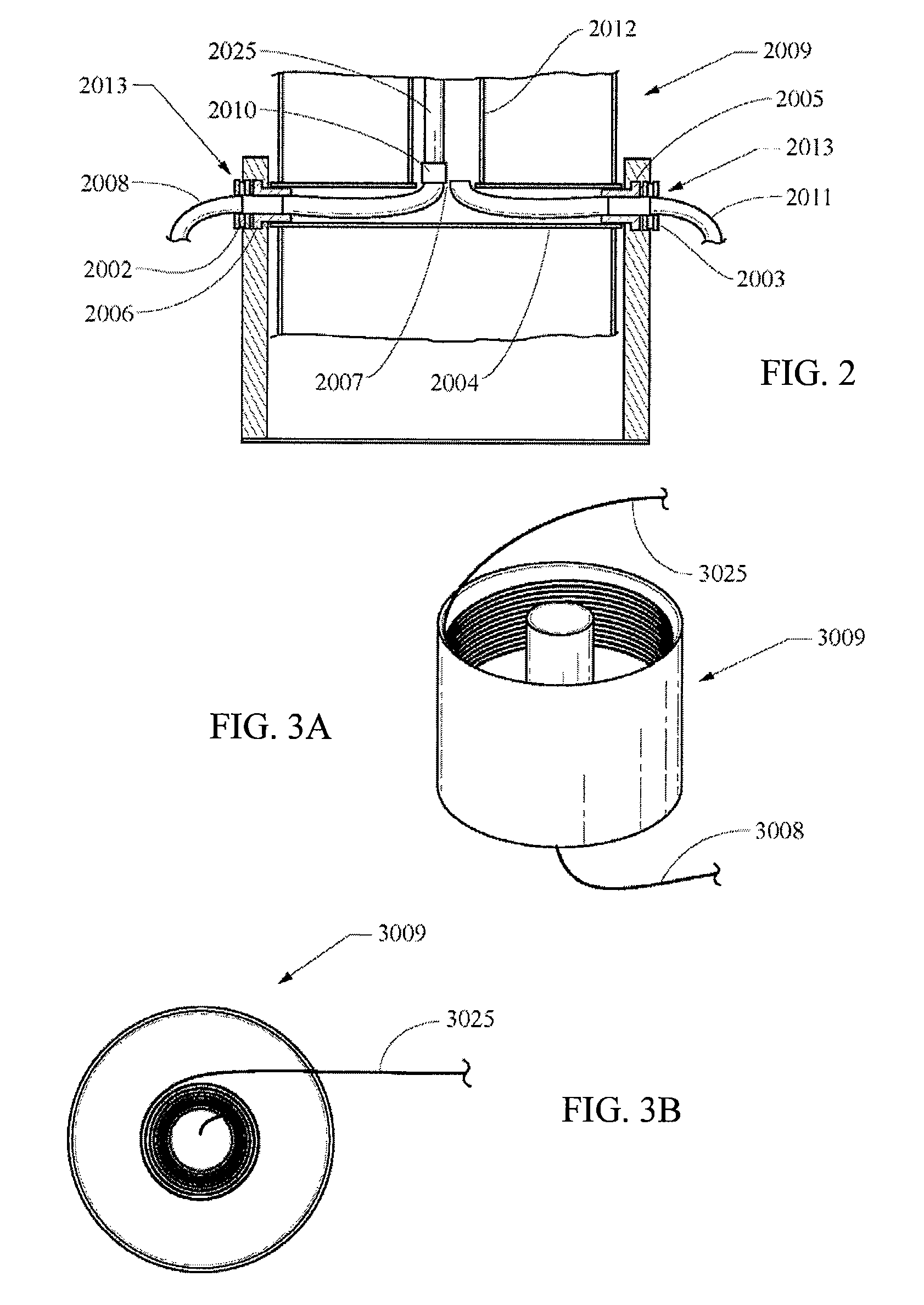Method and system for advancement of a borehole using a high power laser
- Summary
- Abstract
- Description
- Claims
- Application Information
AI Technical Summary
Benefits of technology
Problems solved by technology
Method used
Image
Examples
example 3
[0154]The ability to chip a rectangular block of material, such as rock will be demonstrated in accordance with the systems and methods disclosed herein. The setup is presented in the table below, and the end of the block of rock will be used as a ledge. Blocks of granite, sandstone, limestone, and shale (if possible) will each be spalled at an angle at the end of the block (chipping rock around a ledge). The beam spot will then be moved consecutively to other parts of the newly created ledge from the chipped rock to break apart a top surface of the ledge to the end of the block. Chipping approximately 1″×1″×1″ sized rock particles will be the goal. Applied SP and SE will be selected based on previously recorded spallation data and information gleaned from Experiments 1 and 2 presented above. ROP to chip the rock will be determined, and the ability to chip rock to desired specifications will be demonstrated.
Experimental SetupFixed:Fiber LaserIPG Photonics 5 kW ytterbium-doped multi-...
example 4
[0155]Multiple beam chipping will be demonstrated. Spalling overlap in material, such as rock resulting from two spaced apart laser beams will be tested. Two laser beams will be run at distances of 0.2″, 0.5″, 1″, 1.5″ away from each other, as outlined in the experimental setup below. Granite, sandstone, limestone, and shale will each be used. Rock fractures will be tested by spalling at the determined spalling zone parameters for each material. Purge gas will be accounted for. Rock fractures will overlap to chip away pieces of rock. The goal will be to yield rock chips of the desired 1″×1″×1″ size. Chipping rock from two beams at a spaced distance will determine optimal particle sizes that can be chipped effectively, providing information about particle sizes to spall and ROP for optimization.
Experimental SetupFiber LaserIPG Photonics 5 kW ytterbium-doped multi-clad fiber laserDolomite / Barre Granite5″× 5″× 5″Rock SizeLimestone5″× 5″× 5″Berea Gray (or Yellow)5″× 5″× 5″SandstoneShale...
example 5
[0156]Spalling multiple points with multiple beams will be performed to demonstrate the ability to chip material, such as rock in a pattern. Various patterns will be evaluated on different types of rock using the parameters below. Patterns utilizing a linear spot approximately 1 cm×15.24 cm, an elliptical spot with major axis approximately 15.24 cm and minor axis approximately 1 cm, a single circular spot having a diameter of 1 cm, an array of spots having a diameter of 1 cm with the spacing between the spots being approximately equal to the spot diameter, the array having 4 spots spaced in a square, spaced along a line. The laser beam will be delivered to the rock surface in a shot sequence pattern wherein the laser is fired until spallation occurs and then the laser is directed to the next shot in the pattern and then fired until spallation occurs with this process being repeated. In the movement of the linear and elliptical patterns the spots are in effect rotated about their cen...
PUM
 Login to View More
Login to View More Abstract
Description
Claims
Application Information
 Login to View More
Login to View More - R&D
- Intellectual Property
- Life Sciences
- Materials
- Tech Scout
- Unparalleled Data Quality
- Higher Quality Content
- 60% Fewer Hallucinations
Browse by: Latest US Patents, China's latest patents, Technical Efficacy Thesaurus, Application Domain, Technology Topic, Popular Technical Reports.
© 2025 PatSnap. All rights reserved.Legal|Privacy policy|Modern Slavery Act Transparency Statement|Sitemap|About US| Contact US: help@patsnap.com



